
In the realm of arachnids, where creatures often go to great lengths to hide from potential threats, the wrap-around spider stands as a master of disguise. Hailing primarily from Western Australia, this elusive arachnid belongs to the Dolophones genus and boasts a remarkable talent for camouflage that leaves onlookers in awe.
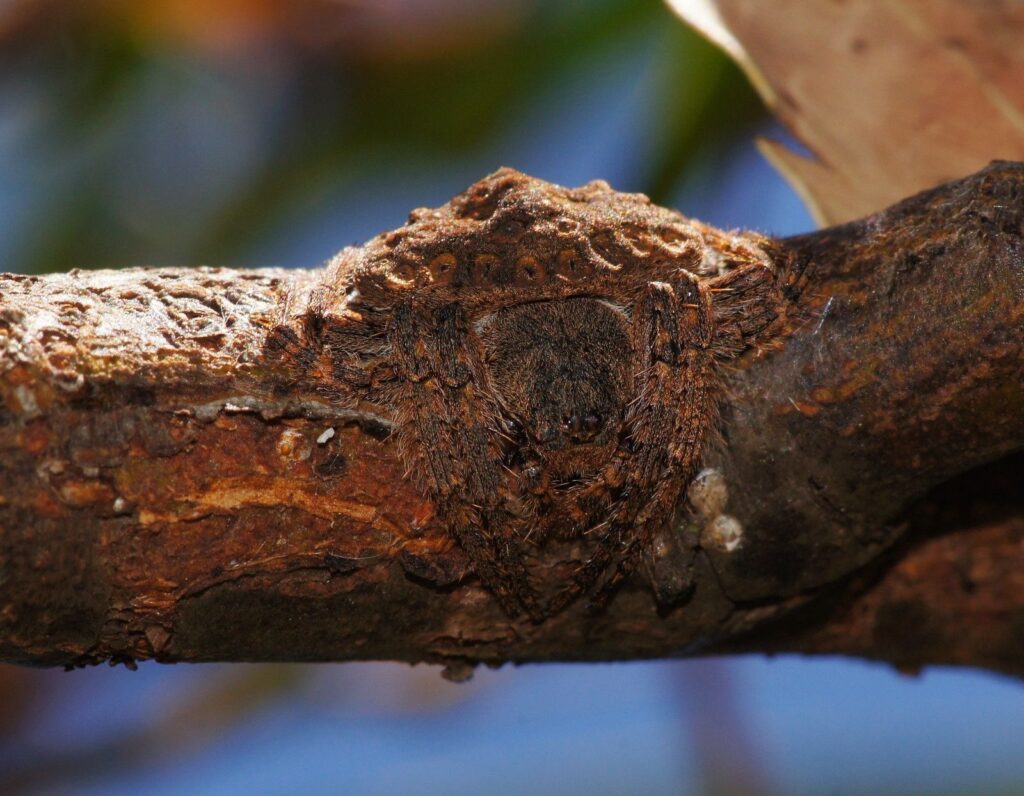
The Dolophones genus comprises 17 species, each bearing the hallmark ability to seamlessly blend into their natural surroundings. What sets them apart is their uncanny knack for flattening their bodies and winding around tree branches, creating a form of camouflage that is nothing short of perfection.
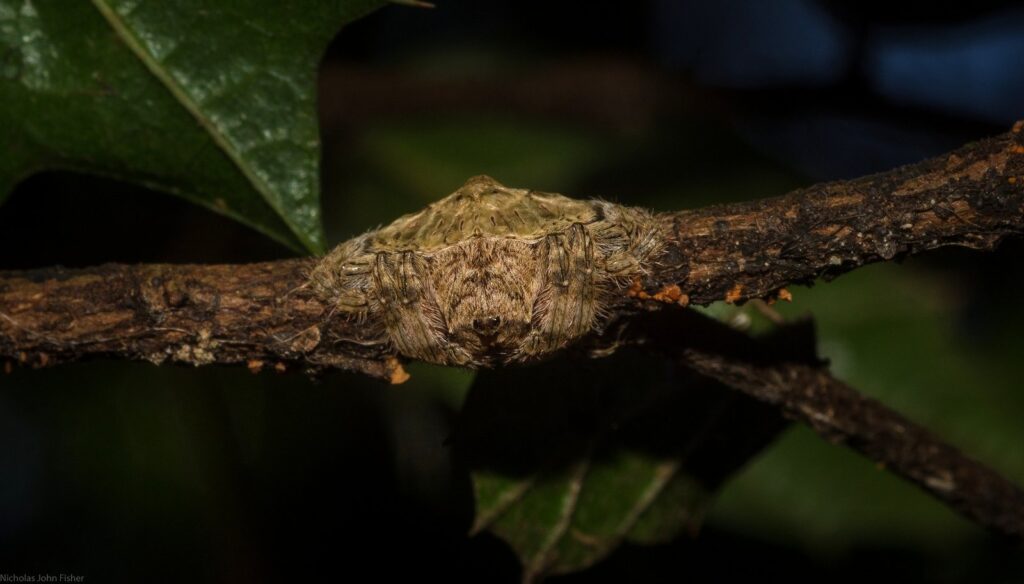
To achieve this remarkable feat, most Dolophones spiders sport upper abdomens shaped like inverted disks, featuring smaller disks with intricate slits. This unique anatomy allows them to wrap themselves around twigs during daylight hours, creating a striking illusion that effectively deceives potential predators, including wasps and birds. It’s a survival strategy that has been finely honed by nature over countless generations.
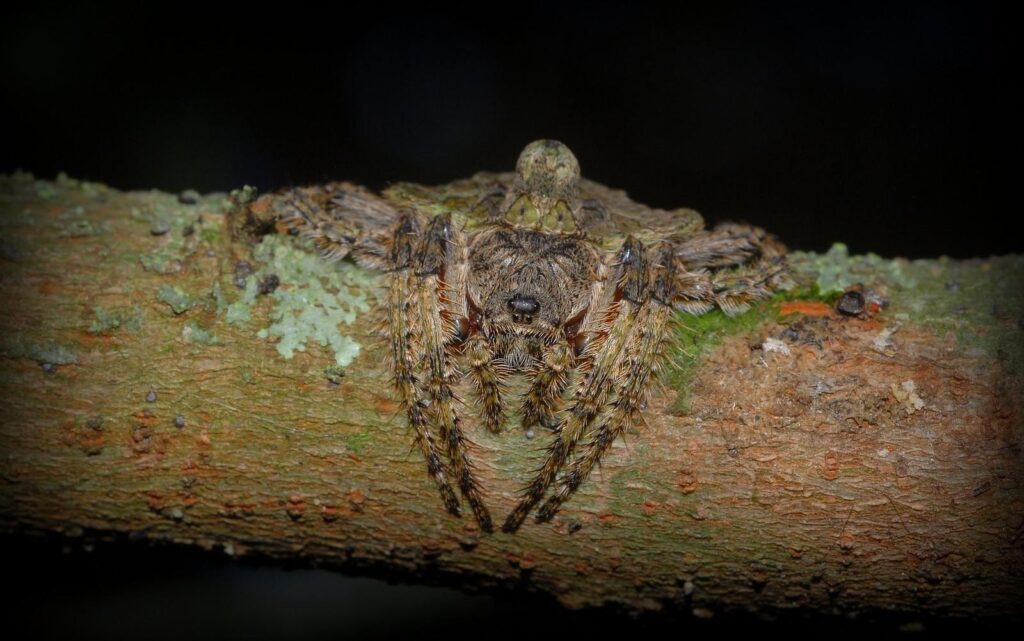
As night descends, these skilled arachnids emerge from their concealed positions to carry out their essential spiderly duties. This includes weaving intricate webs between the trees to ensnare unsuspecting prey. However, with the approach of dawn, they meticulously dismantle their intricate creations, returning to their branch-bound sanctuary once more to await the coming day.
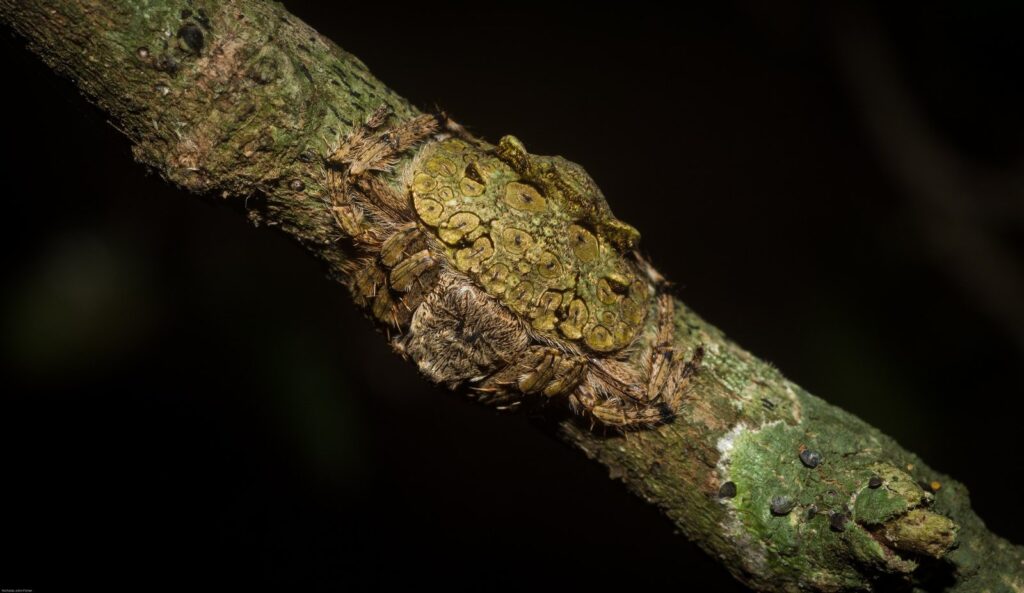
So, for those adventurers who make a habit of reaching for random tree branches in the bush during their afternoon explorations, be aware that a chance encounter with a wrap-around spider is not entirely out of the realm of possibility. Fortunately, there’s no need to fret; these spiders are not a threat to humans, as their venom poses no harm.
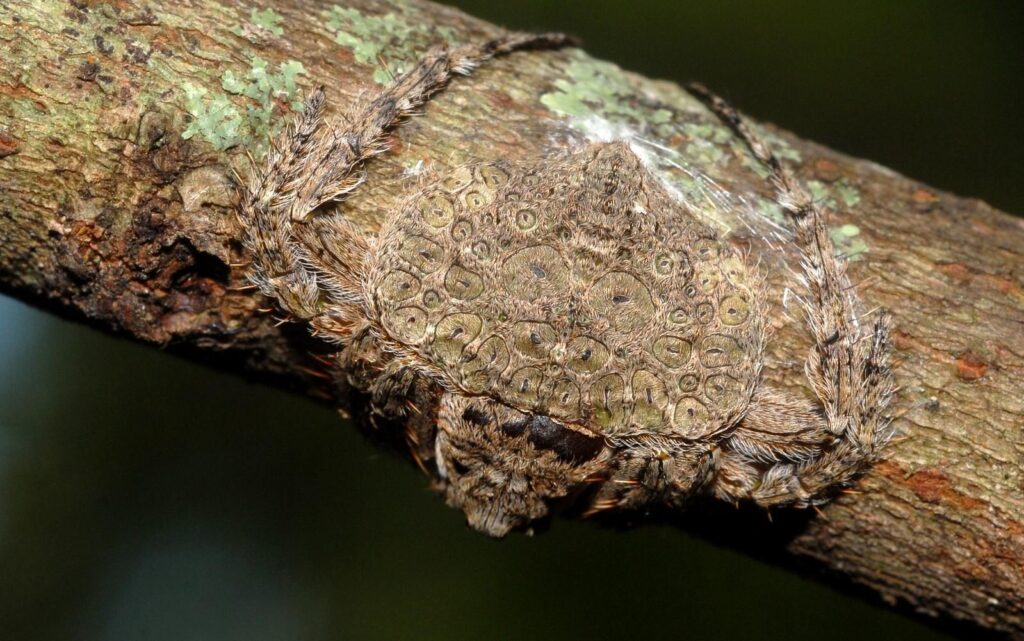
Adding to their elusive nature, wrap-around spiders are petite creatures. Females typically measure around 9 millimeters in length, while males are notably smaller, ranging from 5 to 6 millimeters. Their diminutive size only adds to the challenge of spotting these masters of stealth.
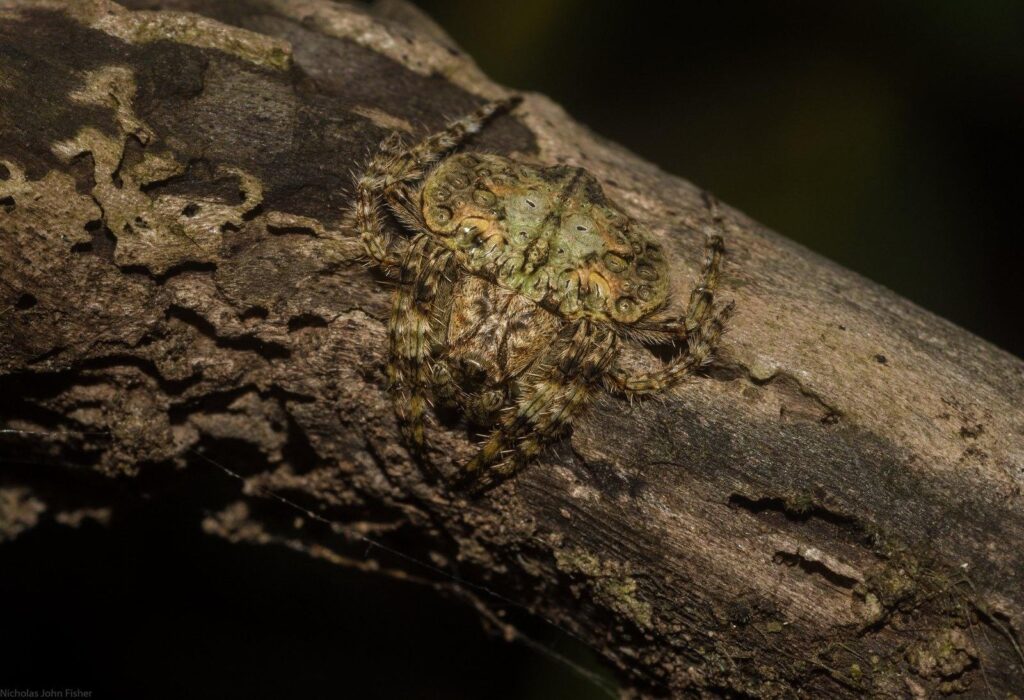
For those curious about the appearance of a wrap-around spider when it’s not executing its astonishing camouflage technique, the image below offers a glimpse of this arachnid in its natural form.
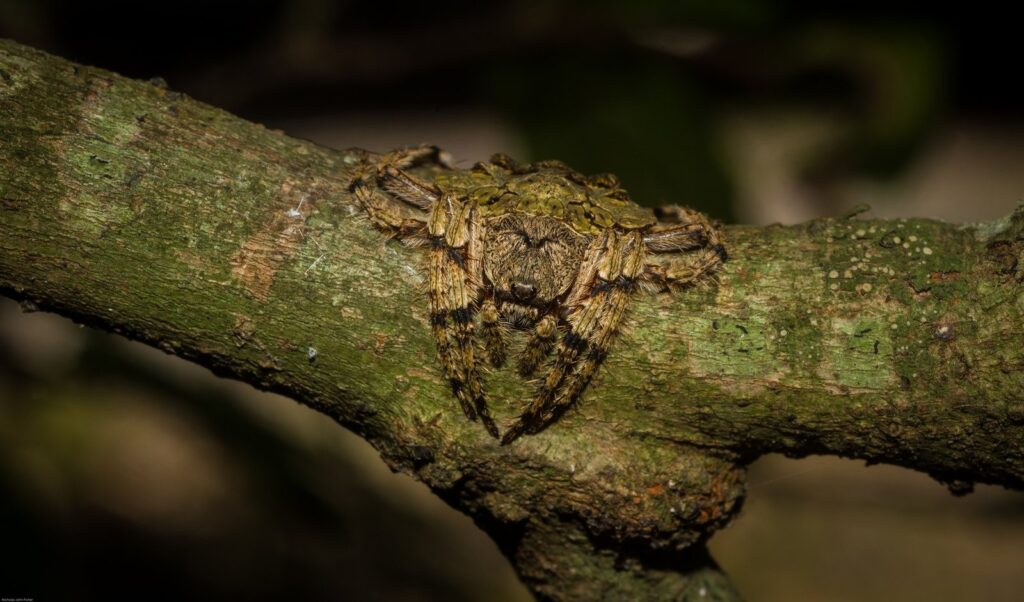
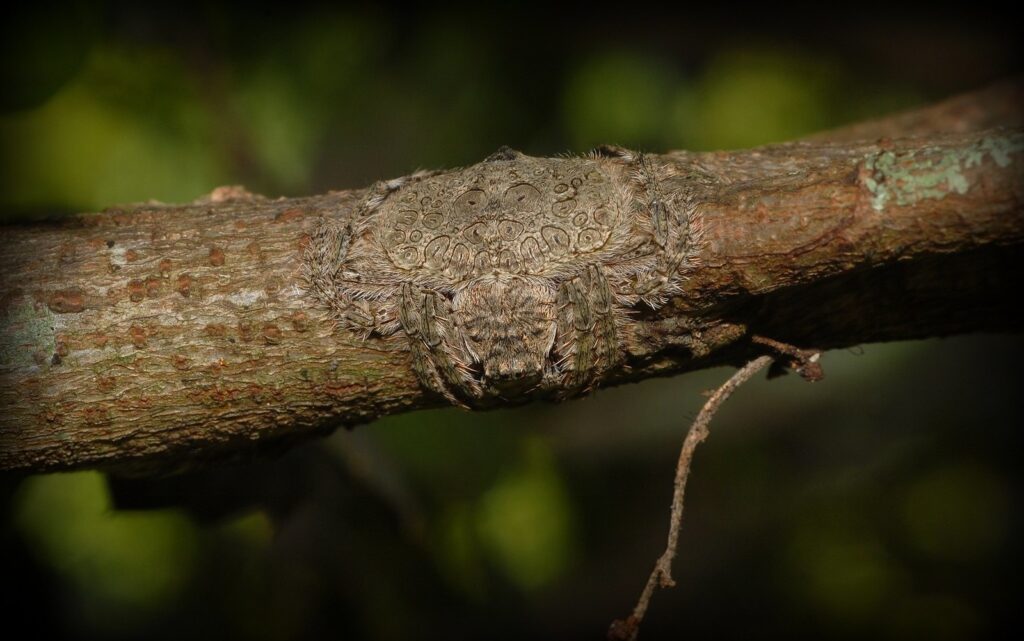

In the intricate tapestry of the natural world, the wrap-around spider stands as a testament to the remarkable adaptations that have evolved to ensure survival. Its ability to seamlessly blend into its surroundings, becoming nearly invisible to the untrained eye, serves as a captivating example of nature’s ingenuity.

Leave a Reply